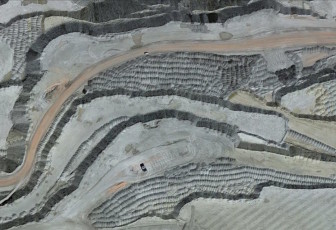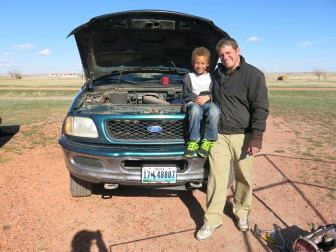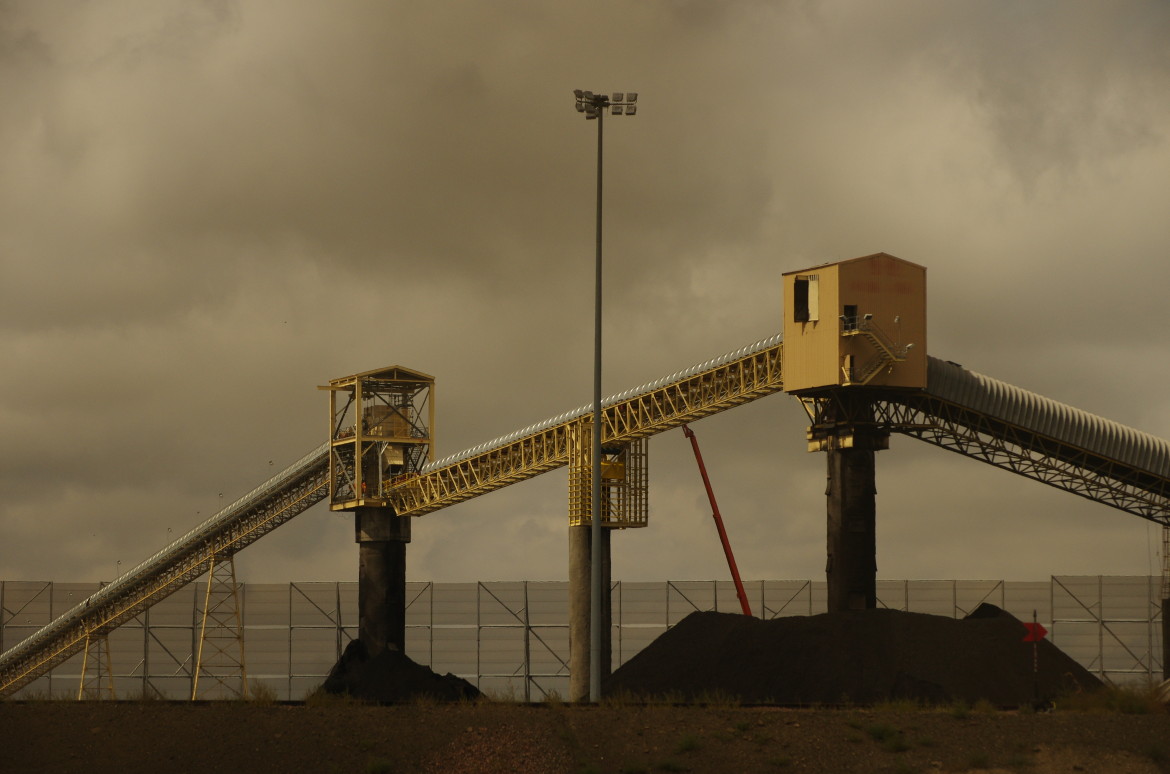Gail Japp’s bright blue eyes are the kind you keep on noticing.

Leigh Paterson / Inside Energy
Gail Japp, 64, was one around 235 workers who were laid off from Peabody Energy’s North Antelope Rochelle Mine at the end of March.
I met the 64 year old at her home outside of Gillette, Wyoming on a gray, windy, day in April. She had just finishing filling out unemployment paperwork.
Japp is one of the 235 coal miners who were laid off by Peabody Energy in March. Arch Coal cut around 230 positions that same week.
I asked her how she felt that day. Her reply: “Devastated, scared. What in the world am I gonna do? I’m single. I’m 64. I have a mortgage. Am I gonna lose my house?”
Japp is quick to add that she is lucky. She will have to sell some of her beloved horses in order to make her mortgage payments but says she isn’t carrying any other debt. She is deeply worried, however, about finding new work.
“I can’t leave Gillette which is really going to make it hard for me to find something because my dad is 90 years old and then I got two grandkids here in town. They try to stay with me as much as they can. So I don’t know. It’s been devastating. I’ve been here since ‘68 so I’ve seen the oil boom come and go. I’ve seen good times and bad times but its never been this bad,” Japp said.

Credit / Google Earth
A satellite view of Peabody’s North Antelope Rochelle Mine.
Gillette is at the heart of Wyoming’s Powder River Basin. The town is full of similar stories as the state’s powerful coal industry begins to feel the full force of the market’s decline. With Peabody Energy’s recent filing, three of the state’s four largest coal producers are now in bankruptcy. Recent layoffs represent around 15% of the workers at North Antelope Rochelle and Black Thunder, the two largest mines in the country. In addition, prices for oil and gas are both way down.
As the state’s energy booms go bust, Wyoming is facing the colossal task of having to replace some of its main economic drivers. It’s either that or learn to live with less.
That would be a big change. For years Gillette’s unemployment rate has been consistently below the state average. The region’s economy has been strong, fueled by energy dollars and well-paying jobs. According to US Census, Gillette’s median household income is $73,426.
These days, business are closing, homes are going up for sale, and people are leaving.
“It is extremely unusual, given the trends of the last 30 years,” explained

Leigh Paterson / Inside Energy
Gillette City Manager Carter Napier calls the economic downturn \”an absolute and complete turnaround.\”
Carter Napier, Gillette’s City Administrator. “We have had incredible growth and an incredibly aggressive building agenda. So yes, it is an absolute and complete turnaround right now. We have food trucks coming to our community to provide basic supplies for life now. And Gillette has always been a contributor to those things state wide, region wide. It’s remarkable the differences that are occurring right now.”
From coal mines in West Virginia to oilfields in North Dakota and Colorado, communities all over the country are struggling with the economics of an energy bust.
Wyoming has put some funding into economic diversification, like programs to encourage growth in industries such as tech and manufacturing. The tech sector, for example, is growing but it is still very small, just 1.8% of total employment, according to the Wyoming Department of Workforce Services.
“Diversification is important, but thinking about what type of impact you’re trying to mitigate when you’re talking about a powerhouse like the coal industry for the state of Wyoming is overwhelming,” Napier said.
To understand why this idea is so completely overwhelming, here are some key Wyoming numbers:
* The average coal miner makes around $83,000 a year.
* The fossil fuel industry – coal, oil, and gas combined- employs about 10% of the private sector’s workforce.
* Revenue from these industries accounts for around 70% of the state’s budget
* In 2014, mining, a category which inclues oil & gas extraction, accounted for around 34% of GDP
Those energy jobs then support other sectors like retail and food services as workers get paid and spend their money.

Leigh Paterson / Inside Energy
Nick De Laat is running for office, in part, because he wants to expand the state’s economy.
Nick De Laat hopes to change that dependence on energy dollars by expanding the state’s economy. De Laat has worked in the coal mines and the oilfields. He most recently owned a newspaper. He’s now running for state office partially to address Wyoming’s economic ups and downs.
“Nobody is really doing anything about it. I haven’t seen any really good investments in the booms to prepare for the busts. Its like every single time they go, ‘Ah! Hindsight being 20/20 we should have prepared for this,’” De Laat said.
De Laat’s plan is to build a highway near Gillette that would connect I-90 with I-25, giving the area better access to cities to the south like Denver, and Albuquerque. He envisions a Gillette as a distribution center and manufacturing hub but notes his plan is for 25 to 30 years in the future.
Wyoming’s energy bust is happening now. In terms of a plan for tomorrow and the next day? There is no quick fix.
What’s Next:
- Wondering what happened to the coal industry? Check out Coal Watch 2016 for ongoing coverage, every step of the way.
- Inside Energy will be in Laramie, WY on April 25th! Join us for a live show about Wyoming’s boom and bust economy.
- So three of the four largest US coal companies are in bankruptcy? What does that actually mean? My story breaks it down.








